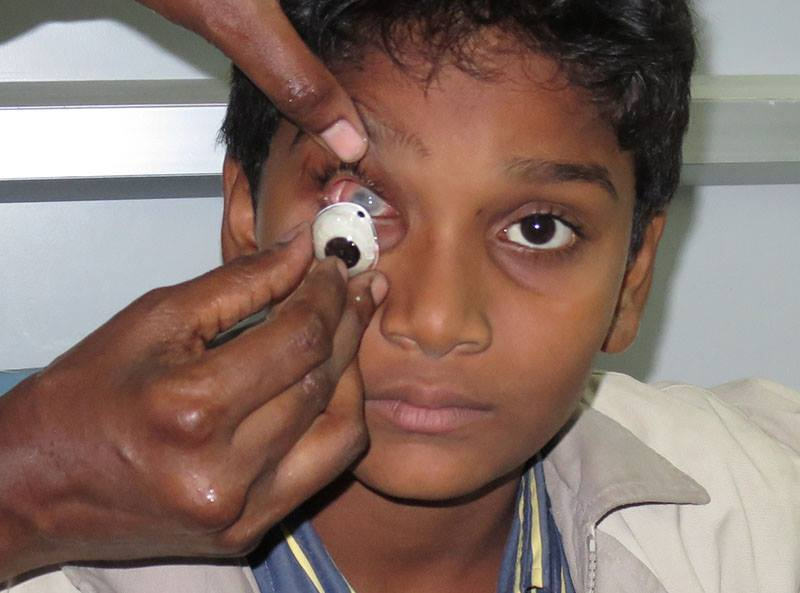 An artificial, cosmetic replacement for an eye lost to trauma or surgery; also known popularly as a glass eye. Since the middle 1980s, the most widely used materials are hydroxyapatite, an inert porous substance, and porous polyethylene. The material is shaped into a sphere, then wrapped in sclera (the tough, white, fibrous outer covering of the eye) obtained from a cadaver. The wrapped sphere is inserted surgically into the eye socket, and the muscles that move the eye are connected to it. Once the area heals after surgery, blood vessels penetrate the sphere so that it becomes an integral part of the eye socket and moves normally with the remaining natural eye. Prosthetic eyes achieve good cosmetic results in most cases, with a relatively small number of complications, such as bulging or sinking of the prosthesis within the eye socket or poor coordination of movement with the other eye.
An artificial, cosmetic replacement for an eye lost to trauma or surgery; also known popularly as a glass eye. Since the middle 1980s, the most widely used materials are hydroxyapatite, an inert porous substance, and porous polyethylene. The material is shaped into a sphere, then wrapped in sclera (the tough, white, fibrous outer covering of the eye) obtained from a cadaver. The wrapped sphere is inserted surgically into the eye socket, and the muscles that move the eye are connected to it. Once the area heals after surgery, blood vessels penetrate the sphere so that it becomes an integral part of the eye socket and moves normally with the remaining natural eye. Prosthetic eyes achieve good cosmetic results in most cases, with a relatively small number of complications, such as bulging or sinking of the prosthesis within the eye socket or poor coordination of movement with the other eye.
